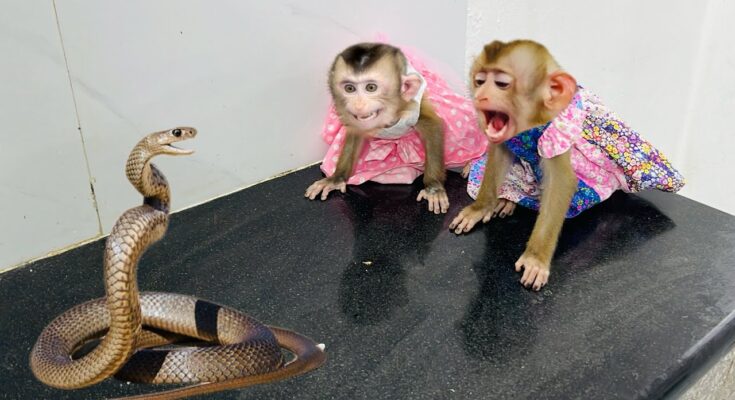
A baby monkey encountering a snake for the first time is a classic example of a natural fear response. This reaction is deeply rooted in evolutionary biology and survival instincts. Snakes are known predators of many primate species, and the sight or movement of a snake can trigger an instinctual fear response in monkeys, including infants.
From an evolutionary perspective, the fear of snakes is beneficial for survival. Primates that learned to avoid snakes had a better chance of surviving and passing on their genes. Over generations, this aversion to snakes has become ingrained in the primate psyche, including that of baby monkeys.
When a baby monkey sees a snake, its immediate reaction is often one of fear and alarm. This response can include freezing, vocalizing distress calls, or fleeing to the safety of its mother or other group members. The mother’s response to a snake can also reinforce the baby’s fear. If the mother reacts with alarm or aggression, the baby monkey learns that the snake is a dangerous threat.
Furthermore, the baby monkey’s brain is wired to recognize and react to certain shapes and movements. The elongated, slithering form of a snake is distinct and can easily be identified as a potential threat. Even without prior experience, the baby monkey’s nervous system can trigger a fear response.
This instinctual fear is not unique to monkeys; many animals, including humans, exhibit similar reactions to snakes. The sight of a snake often evokes a visceral fear, which is a testament to the deep-rooted survival mechanisms shared across various species.
In conclusion, a baby monkey’s fear of snakes is a natural and evolutionarily advantageous response. It is a combination of instinct, learned behavior from the mother, and the inherent ability to recognize the snake’s threatening form. This fear helps ensure the bab

